
Embark on a flavorful journey with the aromatic wonders of Indian spices. Renowned globally for their richness, Indian spices are a cornerstone of the country’s vibrant culinary heritage. From the fiery heat of chili to the warm embrace of cinnamon, these spices not only tantalize taste buds but also offer a myriad of health benefits. Explore the diverse world of cumin, coriander, turmeric, and more, adding depth and complexity to your dishes. Elevate your cooking with the authenticity and magic that Indian spices bring. Join us in celebrating the vibrant tapestry of flavors that make Indian cuisine a sensory delight.
Contents
- 1 Buy Indian Spices Online
- 2 Essential Spices for Indian Cooking
- 2.1 Chilly : Powder/fresh/dried : Cayenne Pepper
- 2.2 Mustard Seeds / Brassica nigra
- 2.3 Cardamom Pods : eliachi
- 2.4 Cinnamon : Cinnamomum verum
- 2.5 Turmeric
- 2.6 Coriander Powder
- 2.7 Cumin seeds
- 2.8 Curry leaves : Chalcas koenigii
- 2.9 Clove : Eugenia caryophyllata
- 2.10 Fenugreek : Semen Foenugraeci
- 2.11 Amchur Powder
- 2.12 Black Pepper : Kala Mirchi
- 2.13 Ginger : Rhizoma Zingiberis
- 2.14 Tamarind Pulpa Tamarindorum
- 2.15 What are the most important Indian spices?
- 2.16 What spices are in an Indian spice box?
- 2.17 Where do most spices come from?
Buy Indian Spices Online
Essential Spices for Indian Cooking
India, known as the home of spices.
The secret of the masterly art of Indian cooking requires a thorough knowledge of the properties of each spice and its blend with other spices.
Masala is a word that is often used in an Indian kitchen. It literally means a blend of several spices. Garam (hot) masala is the most important blend masala and an absolute essential to north Indian preparations, added just before serving the dish to enhance its flavor.
The rational garam masala is a blend of cardamom, cinnamon, cloves and black pepper. Masala may be in dry, roasted ground or paste form.
| Spice / Herb | Indian Name | |
|---|---|---|
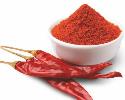 | Chilly : Powder/fresh/dried : Cayenne PepperChilli Powder : Now a basic Indian spice, used mainly for its pungent and fiery taste, one may use fresh green or red chilies instead. | Lal mirch, Hari mirch, Morich, Lanka, Lal marcha, mulagu, Marichiphala Ujjvala, Mirapakaya |
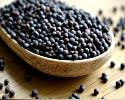 | Mustard Seeds / Brassica nigraTadka or Tempering : Mustard seeds are the small round seeds (black or dark brown in color) of various mustard plants | rai, sarson, or raai |
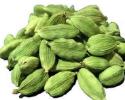 | Cardamom Pods : eliachiThere are two kinds of cardamom used in Indian cooking: green and black. They are used to flavor curries, masala chai and certain vegetables and Indian desserts and is one of the spices in Garam masala. Used for its strong but very pleasing flavor. | Eliachi, Choti elaichi, Yellakai, Elathari, Elakkaai, Yalukalu, Ellakai |
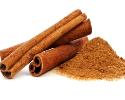 | Cinnamon : Cinnamomum verumUsed for its sweet and pleasing flavor. It is the bark of the cinnamon tree and one of the spices in Garam masala. It is normally used to flavor curries, masala chai and certain vegetables and Indian desserts. | Dalchini, Erikkoloam, Dalochini, Durusita, Twak, Illavangam, Lavanga pattai, Lavangamu |
 | TurmericTurmeric the superfood is a spice made from the root of the Curcuma longa plant. | Haldi, Haladi,Haridra, Harita |
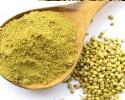 | Coriander PowderCoriander, also known as cilantro or chinese parsley, Coriander powder acts as a thickener in indian curries. | Malli Thool, Kotha malli Podi, Dhaniya Powder |
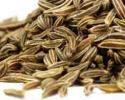 | Cumin seedsCumin seeds are used frequently to add a characteristic smoky flavor to Indian dishes. | jira, kala jeera |
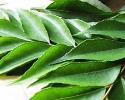 | Curry leaves : Chalcas koenigiiThey are used as a seasoning in Indian Cooking. The currey leaves lose their delicate fragrance when dried, you should try to obtain them fresh, don't waste your time with the dried stuff! | Kari patta, Kareapela, Karuveppilai, Karuvepila, Katneem, Bursunga, Bowala, Karepeku, Karivepaku, Girinimba, Suravi |
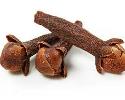 | Clove : Eugenia caryophyllataUsed for its pleasing flavor. and is one of the spices in Garam masala. It easily loses its flavor and is used to flavor curries, masala chai and certain vegetables. | Laung,Lavang, Lavanga, Labango, Grampu, Krambu, Shriisanjnan, Lavangalu |
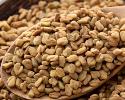 | Fenugreek : Semen FoenugraeciThis is a basic but not essential Indian spice which is actually a lentil and is used for its strong, bitter taste. After turmeric it has the most medically useful item in the Indian kitchen. If it is burnt it gets very bitter and should be thrown away. | Methi (seeds), Kasoori methi, Sag methi (leaves), Mente, Methri, Vendayam, Mentikura, Mentula |
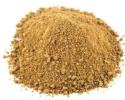 | Amchur PowderAmchoor or aamchur, also referred to as mango powder, the spice adds The spice adds sour taste, used as as a citrusy seasoning in indian foods. | Amchoor or aamchur |
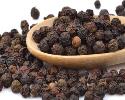 | Black Pepper : Kala MirchiBlack pepper are used in Indian cuisine at all stages of the cooking process and as a table condiment. | Kala mirchi, Gulki, Menasu, Kuru mulagu, Marichan, Vella, Krishnan, Krishnadi, Savyamu, Miriyalu |
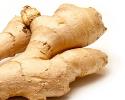 | Ginger : Rhizoma ZingiberisA basic but not essential Indian spice, used for its warming properties and wonderful aroma and taste. | Adrak, Sonth, Alla, Inchi, Ada, Adraka, Shringaveran, Sringaaran, Allam, Ingee |
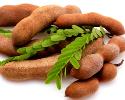 | Tamarind Pulpa TamarindorumThe Juice of dry Tamarind are adequate to add a touch of sourness in the curry. It is extensively used in south indian cuisine and is normally used as a replacement for tomatoes. | Imli, Amla, Huli, Hunise mara, Puli, Imbli, Tintiri, Tintiddii |
So one can say that the characteristic of each curry relies entirely on the balance of herbs and spices that go into its creations. Local influence distinguishes curries from one region to another.
Asafoetida
Used as a digestive aid in Indian cooking.
Bay Leaf
A bay leaf is a fragrant leaf added to to rice, biriyani, soups and sauces.
Nutmeg / Myristica fragrans
Sweet and pungent, flavoring for baked goods, sweet and savory dishes.
Mace
Mace is the dried net-like covering of the shell of the nutmeg seed.
Medicinal Value
Nutmeg and mace are used for diarrhea, nausea, stomach spasms and pain, and intestinal gas.
Food is tasteless without spices, and every region has its own preferred ones. It’s these unique combinations that give different cuisines their uniqueness. Spices contribute rich flavor to food without adding any calories or fat.
Spice List :
Black Pepper, Cardamom, Cinnamon, Clove, Curry Leaves, Cumin, Red Chillies, Coriander, Fenugreek, Fennel, Turmeric
Spices are defined as “a strongly flavored or aromatic substance of vegetable origin, obtained from tropical plants, commonly used as a condiment”. A spice is a dried seed, fruit, root, bark or vegetative substance used in nutritionally insignificant quantities as a food additive for the purpose of flavoring.
What are the most important Indian spices?
The Essential Indian Spices are:
- Cayenne pepper
- Turmeric
- Cumin seeds
- Coriander seeds
- Black mustard seeds
What spices are in an Indian spice box?
The secret to mastering home style Indian cooking lies in the spice box.
In an Indian kitchen, the spice box is the most prized item.
The idea is that you set the box beside your stove, so you’re not scrambling and looking for different spice containers while the oil is at its perfect temperature.
Timing is key in Indian cooking.
Most Indian recipes begin by heating oil first, then adding small amounts of spices in quick succession. The cooking oil’s temperature has to be just right so mustard seeds pop, cumin seeds sizzle, and turmeric, red chile powders and ginger garlic paste lose their raw edge without burning.
- Mustard seeds
- Cumin seeds
- Turmeric powder
- Red Chili powder
- Coriander-cumin powder
- Garam Masala
- Amchur (Dried mango powder)
Where do most spices come from?
Most spices are grown in the tropical regions of the world.
Top spice producing countries :
Indian Spices from Kerala : Malabar Coast
Black Pepper, Clove, Cardamom, Cinnamon, Nutmeg, Star Anise, Ginger, Turmeric
Indonesia
Vanilla, Nutmeg, Cinnamon, Cloves
Guatemala
Cardamom
China
Chili pepper, Ginger, Cinnamon
11 Essential Spices for Indian Cooking
Indian Spices, Seasonings & HerbsIndian Cooking Basics
All About Tadka – The Indian Tempering
Breakfast
Snacks
Salads & Chutneys
Vegetarian Recipes
Butter Chicken Recipe
Tandoori Chicken Recipe
Chicken Masala Recipe
Desserts
Festival Dishes
Kerala Recipes
Goan Recipes
Chicken Tikka Recipe
Roast Chicken Recipe
Chicken Moglai Recipe
Indian Curry Chicken
